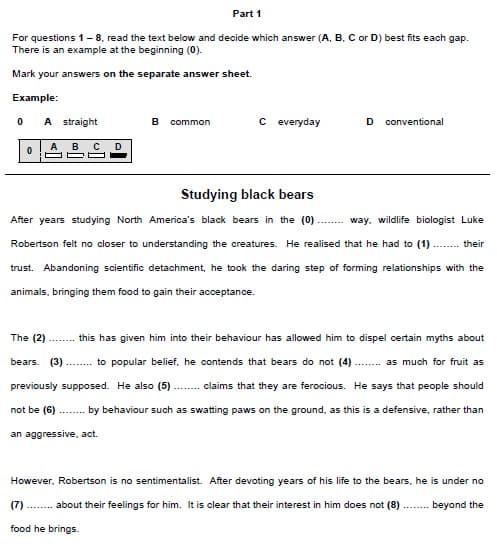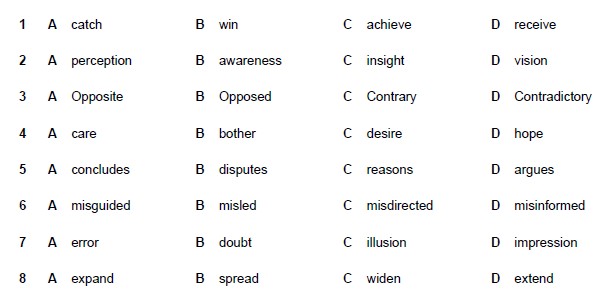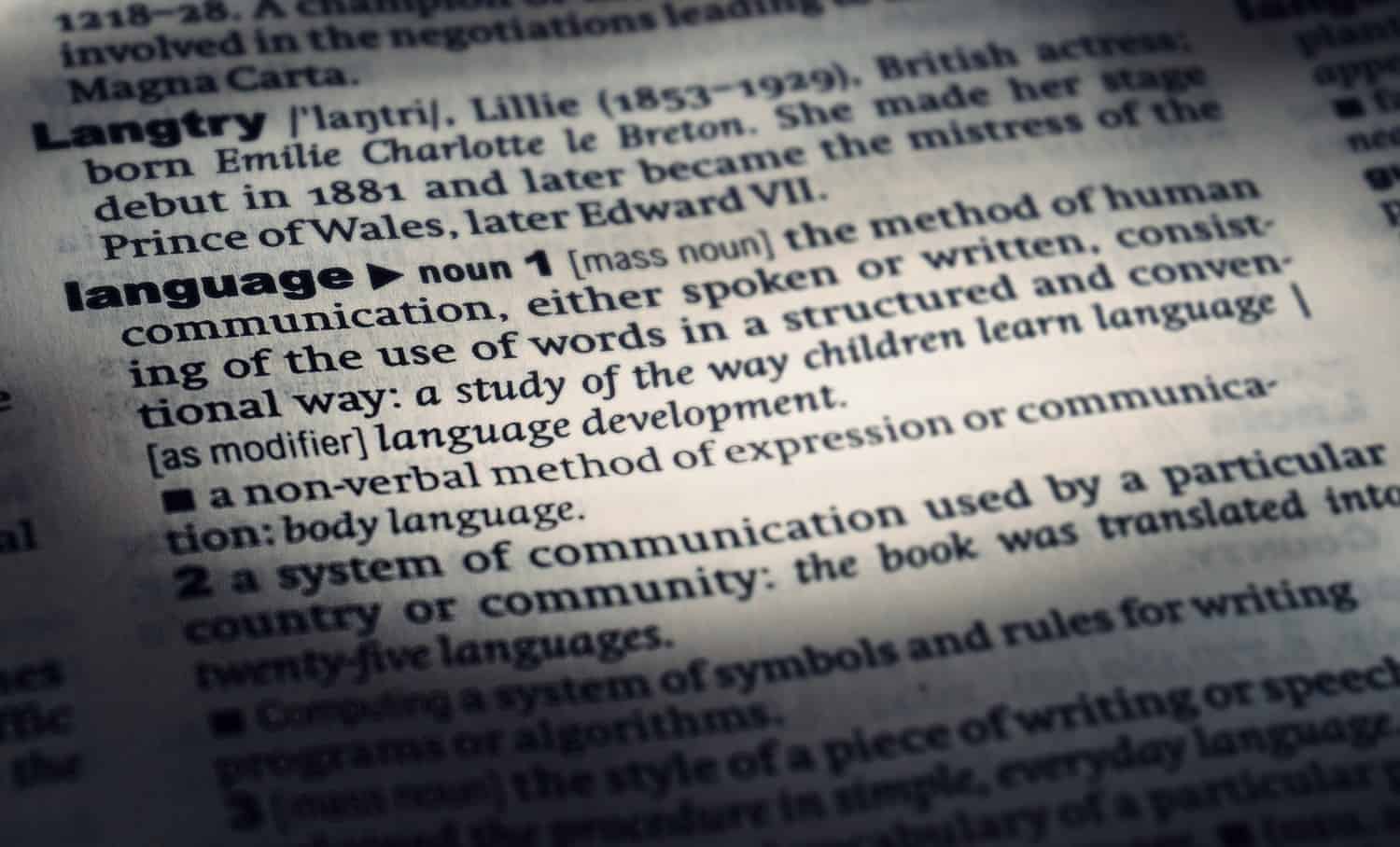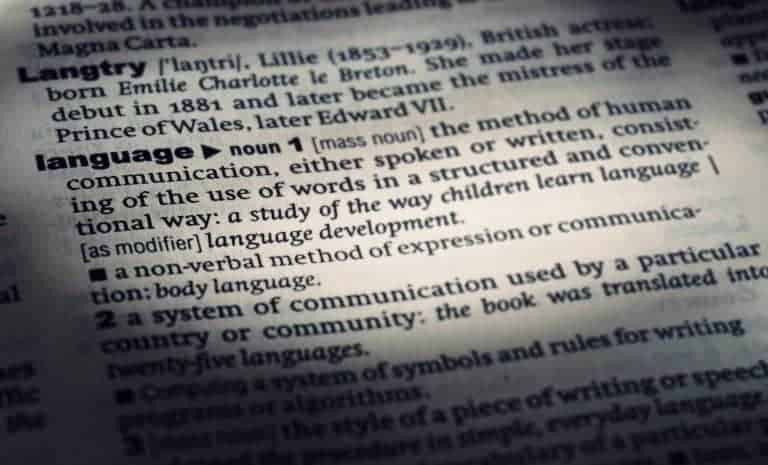Reading and Use of English Part 1
Reading and Use of English might be the most difficult and most feared part of C1 Advanced as candidates fight not only with all the grammar, vocabulary and reading skills they have to practise beforehand but also with the immense time pressure of having just 90 minutes to complete all eight tasks.
In this article, I’m going to focus on Part 1 of Reading and Use of English. You are going to find out what the task looks like, common problems and useful tips and strategies that can help you ace this task.
I also recommend looking into the exam paper as well as the exam in general to get a better idea of the whole test. Just click one of the links below and let’s get started.
>>> Learn more about C1 Advanced Reading and Use of English <<<
>>> Find out more about C1 Advanced in general <<<
What do you have to do in Part 1?
Part 1 – multiple choice cloze (a text with gaps): You read a short text with eight gaps. For each gap, there are four possible words to choose from (A-D).


You can see that in the instructions, there is always an example for you to check how the task is done. Be careful and start the task by looking at gap number 1. I’ve seen many candidates you habitually try to start with number 0 (the example) and are then surprised that none of the possible answers makes sense.
Below the text, you can find the possible answers. For each gap in the text, you can choose from four options A-D.
This part tests your vocabulary skills, especially your knowledge of idioms, collocations, fixed phrases, etc., but it really belongs to the Reading paper together with Parts 5-8. Once again, I suggest looking into the whole paper before you dive into the specifics of each part. Click the link below to learn more about Reading and Use of English.
>>> Everything you need to know about C1 Advanced Reading and Use of English <<<
The 3 most common problems with Part 1
In this part of the article, we are going to have a look at common issues that I quite often experience with candidates taking C1 Advanced. These problems can easily be avoided, but only if you work on your skills and strategies. Once you know what can go wrong, you can prepare for it.
Candidates don’t know how to do the task
I love people who are so overconfident that they really believe they can take C1 Advanced without any preparation. They think that they can simply do it because their English is already good enough.
For some candidates, that might be true, but if you are one of them, you might consider taking C2 Proficiency instead of wasting your time with C1 Advanced. If you aren’t Superman, however, it is really important to study and understand each task of Reading and Use of English. After all, Cambridge exams test your language skills, not how well you can guess an answer.
Language skills
This point is connected to the previous one, but I think it is important to look at it separately.
C1 Advanced is an exam designed to assess your level of English which includes Reading, Writing, Listening, Speaking as well as grammar and vocabulary. What I have learned from years of teaching and getting candidates ready for the test is that a look of language development needs to go into one’s preparation. Way too often do I see students whose level of English is simply not on par, but they feel pressured to take the exam for various reasons.
Let me assure you that your English language skills, in this case, your vocabulary, need to be on point. You have to study hard and do whatever you can to improve to the point that you are familiar with whatever Cambridge might throw at you during the test.
>>> Check out this FREE tool to check your grammar and spelling. <<<
Time management
I left this issue for last because it comes back to bite candidates in their backside so often that I could fill books with stories of frustrated students who just can’t finish Reading and Use of English in time.
Without the right strategy, you might find yourself running out of time without having even looked at all the parts of the exam paper. Remember, there are eight parts to complete but only 90 minutes to do so including the time it takes to transfer all your answers onto a separate answer sheet. I guess it makes sense that you should think about how to approach the exam before you blindly walk into it on test day.
Tips and strategies
After looking at some of the most common issues with Reading and Use of English Part 1, we can now focus on the best tips and strategies to get through this part as efficiently (time management) and effectively (high marks) as possible.
However, before we get into detail, remember that preparation and practice cannot be replaced by a nice technique or shortcut. Make sure you put the required work in as, otherwise, you won’t succeed.
Read as much as you can when getting ready for C1 Advanced. By exposing yourself to the English language in general you can already benefit tremendously. Our brains have the capacity to process large amounts of information without us being consciously aware of it. With every sentence, you read your inner grammar machine becomes more sophisticated and you vocabulary improves without you even noticing.
Plan out your action steps
Every task in Reading and Use of English comes with a different set of requirements, language focus and emphasis on certain skills. Therefore, it is a good idea to look at each task individually rather than just going into the exam thinking about it as ‘this grammar and vocabulary exam’. Once again, preparation is key.
In my experience, the following step-by-step process works very well for most people. However, if you feel more comfortable with something else, please run with it. Your main takeaway from this article should be the understanding that a clear idea and plan for the different tasks is not only useful but necessary if you want to succeed.
With that being said, let’s check out a possible strategy for Reading and Use of English Part 1:
- Read the title and text quickly
- Analyse the gaps and look for signal words
- Analyse the possible answers based on your findings and choose the correct option
- Read the text again
As you can see, there are not a lot of steps you need to remember, but each step builds on the previous one so only together will they maximise your success.
Read the title and text quickly
This first step is actually optional and it depends on how comfortable and fast you are reading in English. If you are a quick reader, do it. If you are slower or struggle a little bit, go straight to the following step.
Why is it a good idea to read the title and text? It gives you a general idea of the topic and a better feeling for the test. This, in turn, can already give you a little advantage for the following steps in our strategy.
Analyse the gaps and look for signal words
The next thing you need to do is to look at the gaps one by one and check if there are any clues that might help you with the task.

Remember our example from earlier? Looking at the first gap, we notice the modal verb ‘had to’, which tells us that a verb is needed in the gap. Also, after the gap, it says ‘their trust’ so we probably have to look for a verb that collocates with that.
Analyse the possible answers based on your findings and choose the correct option
With all of this in mind, let’s look at the possible answers again.

Of all the options under 1, only one verb meets our criteria from above. Have you already guessed which one it is? I’ll give you another few seconds…you got it! It’s answer B, win. Only ‘win someone’s trust’ is a valid collocation in English while answers A, C and D simply don’t work here.
Repeat this process for all the other gaps and then continue to the last step.
Read the text again
Once you’ve decided on the different options, it’s time to read the text one last time in order to check if your answers really make sense.
It often happens that students get caught up in detail and they forget about the bigger picture. Reading the text again can help you catch mistakes because after all the hard work you don’t want to lose marks just for a small oversight.
Time management
Apart from knowing exactly how to get through Reading and Use of English Part 1, it is also very useful to look at the timing of the exam and what you can do to become faster and more efficient not only in Part 1 but in the whole exam paper in general. Just click the link below to find out more.
>>> Find out everything you need to know about Reading and Use of English <<<
Never miss an answer
In many countries, students are used to being punished for giving wrong answers in exams by losing marks if their answers are incorrect. To me, this has never made any sense and I’m very happy that in C1 Advanced you don’t have to worry about this.
Every correct answer earns you marks, but nothing bad happens to you if you get something wrong.
For that reason, make sure that you always answer each single questions even if you are not sure and have to guess. The best thing that can happen is that you earn some lucky marks and if not, you just keep your score. Sounds like a pretty risk-free option to me so take it.
Summary
Reading and Use of English Part 1 tests your vocabulary, especially idioms, collocations and fixed phrases. You can use specific techniques and strategies, for example, a step-by-step process to save time and earn as many marks as possible.
For you, it is time to practise now. There are tons of online resources and books that you can use to improve and become more comfortable with this part of C1 Advanced, but I hope that this article can lay the groundwork for your success.
Lots of love,
Teacher Phil 🙂














